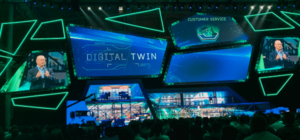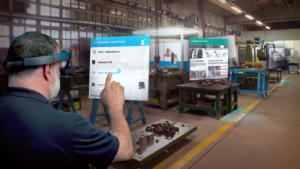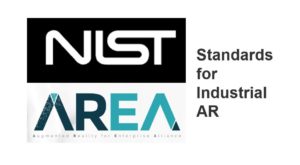Wolfgang Stelzle Reflects on New AREA Member RE’FLEKT

AREA: RE’FLEKT’s growth seems quite robust; to
what do you attribute your success?
WOLFGANG
STELZLE: There are four major factors. First, we’ve been in the industry for a
while; both my co-founder, Kerim Ispir, and I have been working in the AR space
since 2010 and we founded the company a little later in 2012. This is a lot of
time in the tech/AR space to gain in-depth experience. Second, our REFLEKT ONE
and REFLEKT Remote products closly follow our differentiated and innovative
approach as a company with a customer base in the industrial sector. Third, we
have good relationships with our partners and investors, including Bosch, BASF
Ventures, Microsoft, Prosegur and Siemens. This is essential as we receive
strong support for our products, which helps grow the company. Last but not
least, we’ve built a strategic partner ecosystem of technology providers,
resellers, and service partners. All of these factors have contributed to our
growth, and we hope, will help build a successful future.
AREA: Has RE’FLEKT made a deliberate effort to
make it easier for companies to ease their way into AR adoption; for example,
by using their existing CAD drawings to build solutions?
STELZLE:
Yes. Our solution is not just using the CAD information by manually copying and
pasting it into a “what you see is what you get” editor for Augmented Reality. Instead,
we designed a tool that really leverages your existing IT infrastructure so
that your technical information or CAD systems can be used for creating any
sort of AR content based on what you already have. Our product approach is to enhance
those systems and give technical authors the ability to publish to Augmented
Reality in addition to the manuals, PDFs, and websites where they currently produce.
Since it all happens in one place, technical authors don’t have to change their
existing authoring structure, which makes it much easier to establish AR in
technical authoring.
AREA: Why has RE’FLEKT been particularly
successful in the automotive market?
STELZLE:
One key factor is that our HQ is located in Munich, Germany, close to some of
Europe’s largest OEMs. Second, Bosch’s involvement with us as a partner and
investor has opened many doors in the automotive industry. Also, a core feature
of our product is object recognition, which is particularly helpful when you’re
dealing with cars and other vehicles. And finally, the automotive industry is continuously
driving progress and innovation. They’re always looking for new ways to reduce
costs and develop new products – two areas in which AR has huge potential.
AREA: Could you share with us any examples of
ROI from companies using RE’FLEKT?
STELZLE:
This is still one of the most difficult questions to answer reliably and
accurately, particularly for RE’FLEKT, as we are a platform vendor and do not
always have direct access to customer data after deployment. However, I can
tell you that, based on a study of about 100 users, Bosch has solid data
showing savings of 15% in training costs by using RE’FLEKT solutions. I would
also point out that ROI is very use case-dependent, so that number could be
completely different for another customer and use case.
AREA: What do you see as the biggest obstacles
to AR adoption today?
STELZLE:
There are many. One research project has identified more than 40 hurdles to AR
adoption. Here are three that I think are the most significant. First is the
need. A machine manufacturer needs a screw if a machine breaks, but he doesn’t
necessarily need AR to address that; the pain isn’t big enough yet in many
areas. That will change as manufacturers face the knowledge gap in the future. Second,
in various areas, the technology is still not yet mature enough. Many of the AR
glasses are still balky, battery life is short, or they are simply not yet
enterprise-ready. We also take a close look at tracking possibilities, where
there is also still room for improvement, particularly in outdoor environments.
Finally, it’s still costly for companies to get started with Augmented Reality
and create the first content. That last hurdle is one RE’FLEKT is working hard
to overcome. But even so, sometimes the data within a corporation is not very
well structured. Many customers have told us that before they can implement AR,
they have to reorganize their data. I believe all of these things will change
in the near future.
AREA: RE’FLEKT has recently opened offices in
the United States. Can you tell us what your near-term strategic priorities
are?
STELZLE:
A top priority is to expand our partner ecosystem in many areas – technical
information systems, CAD systems, and service providers. Second is investing in
expanding our sales and marketing efforts to make it easier for our customers
to get started with AR – with proper content, case studies, ROI studies, and so
on. Then of course, we’re working hard to take advantage of all the new
developments, such as the Microsoft HoloLens 2 and other new hardware products.
Longer term, it’s all about fulfilling our vision of making the maintenance and
operation of complex machinery as easy as using a simple home appliance. We
don’t just look at Augmented Reality, but instead we always think of actual
problems as well as the systems around that can help solve that problem. For
example, if a machine breaks, AR isn’t the only thing that needs to be
considered. It’s the communication of the machine with the Internet of Things.
It’s the smart selection of a solution for the user. It’s the feedback to the
system to learn from the environment. We will continue our product development
to make that vision a reality.
AREA: What do you hope to gain by being a
member of the AREA?
STELZLE:
First and foremost, it is important for all of us to shape the market with an
independent, objective organization like the AREA that provides content that we
can all make use of. We also want to leverage the network and its activities
for joint sales and marketing. Equally important is knowledge exchange with the
other partners in the AREA network and get to know different perspectives on
the market. It’s all about learning – learning from the work of the AREA,
learning from research institutions, and learning from customers. Our people
are already participating in the committee work, including security, marketing,
and research.









